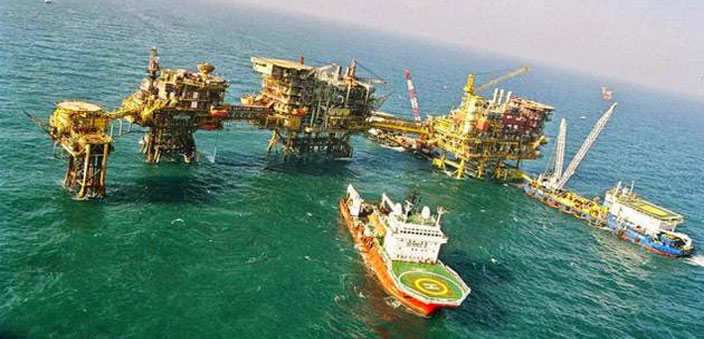The World Ocean Day theme for the year 2017 is “Oceans and our future”. Every year the World Ocean Day (June 8) is celebrated to gather information and knowledge about the ocean, the cause and effect of ocean’s pollution by various agencies, including human interference. Therefore, people need to be continuously educated by all possible means to save the oceans in order to have a better life on planet Earth.
The world’s oceans (including Pacific, Atlantic, Antarctic, Indian and Arctic oceans) are the habitat of more than 230,000 known species. Much of this ocean is unexplored; the number of species that exist could be much larger. The origin of Earth’s oceans remain unknown, but a few hypotheses suggest that oceans have formed in the Hadean, a geologic eon of the Earth predating the Archean period (4.6-4.0 billion years ago), and may have been the impetus for the origin or emergence of life. The oceans are great repositories of biomass as well as hydrocarbons, different kinds of economically viable minerals including polymetallic and phosphate nodules, precious metals and stones. Therefore, it is the responsibility of mankind to keep oceans clean, healthy and free from any pollution, or destruction of the marine environment in the name of offshore developmental activities, installation of offshore structures etc. It is well established that the oceans are huge depositories of hydrocarbons, as well as living resources. Therefore it is essential to strike a balance between exploration activities and protection of marine environment to enjoy the benefits of the seas and oceans. Significant reserves of oil and gas are found to occur below the seafloor of all the oceans in several parts of the world. For example; the offshore regions of America, Canada, Venezuela, Russia and gulf countries. The exploration, prospecting, drilling, and transportation can seriously damage the sensitive marine protected areas, and disturb the habitat of marine species.
What is an ocean?
An ocean is a large body of salt water occurring between the continents. All the oceans are actually one big “ocean”, because they are joined. We can observe from Figure 1 (page 7) the spatial distribution of continents and oceans.
There are five oceans surrounding the six major continents and numerous offshore islands of different dimensions. It is believed that over vast periods of time, water remained as a gas, until the Earth cooled below 212 degrees Fahrenheit, and around 3.8 billion years ago, the water then condensed into rain which filled the existing basins and formed the oceans.
The largest and deepest among the five oceans is the Pacific Ocean, while the Arctic is the smallest and shallowest. Interestingly, the Pacific Ocean covers one third of the Earth’s surface. Large and small fish, crabs, starfish, sharks, whales, microbes, biomass, are found in all oceans. The Pacific, Atlantic, Indian, Southern (Antarctic), and Arctic Oceans come in descending order by their area. The word sea is often used interchangeably with “ocean” in American English but, strictly speaking, a sea is a body of saline water partly or fully enclosed by land. For example, the Caspian Sea and the Dead Sea are large saline lakes that are surrounded by land, and they lack a natural outlet.
Oceans combined contain 97% of Earth’s water. Oceanographers believe that less than five percent of the world ocean has been explored for harnessing hydrocarbons, which I will discuss at length here. As the world ocean is the principal component of Earth’s hydrosphere, it is the gateway to all known life, and forms part of the carbon cycle, which influences global climate and weather patterns. Some very unusual organisms live in deeper depths (>4000 meters) of the ocean, where oxygen is totally absent, and these organisms do not require energy from the sun for their survival.
What are hydrocarbons, and the Indian context
The term ‘hydrocarbon’ is self-explanatory, which means compounds of carbon and hydrogen only. All petroleum products associate in different molecular forms of these molecules. Hydrocarbons play a key role in our daily life. You must be familiar with the terms ‘LPG’ and ‘CNG’ used to describe fuels. LPG is the abbreviated form of liquefied petroleum gas and CNG is compressed natural gas. Another term ‘LNG’ (liquefied natural gas) is also in news these days. This is also a fuel and is obtained by liquefaction of natural gas.

It is appropriate at this juncture to know about India in the context of its hydrocarbon potential. The Indian continent is surrounded by huge water bodies on all three sides except in the north, where India collided with Eurasia and gave birth to the mighty Himalayas. The western part of the Indian continent is bordered by the Arabian Sea, while the eastern side by the Bay of Bengal. The Indian Ocean forms the southern boundary of India. The Arabian Sea and the Bay of Bengal are interconnected by the Indian Ocean at the southern tip of India, i.e., Kanyakumari. Therefore, the Arabian Sea and the Bay of Bengal are integral components of the Indian Ocean. The living resources, i.e., fish, biomass etc., and non-living resources including hydrocarbons, deep sea minerals etc., of both Arabian Sea and Bay of Bengal require due attention and exploration to understand and to estimate the reserves.
India’s economy
India, a nation of 1.3 billion people, has been declared in 2017 as one of the fastest growing economies in the world, with an economic growth rate of 7.1%. India is also the fourth-largest net importer of crude oil after the European Union, the United States, and China. The oil majors of our country such as Oil and Natural Gas Corporation Limited (ONGC), Oil India Limited (OIL), Reliance India Limited (RIL) and other state owned oil companies are continuously striving hard to protect the country’s interest on energy security by knowing and forecasting the oil and gas reserves and requirements. Of course, the existing oil reserves are inadequate against the growing demand, therefore India imports approximately 58% of its crude oil from the Middle East, mostly from Saudi Arabia and Iraq.
The shallow water oil fields such as the Bombay High in the west coast and other oil fields along the east coast of India, have been considerably exploited; therefore, there has been an increasing interest in deep water oil and gas exploration.
Without natural gas, oil and coal, the world would come to a standstill. Most of the modern industrial nations are dependent on fossil fuels, and the energy consumption has risen by about 70 percent over the past three decades. The International Energy Agency (IEA) in Paris projected that the consumption will increase at least by another 50 per cent by 2030. The greatest consumers are the USA, China, Russia and India. The demand for energy will continue to increase due to rapid industrialisation and urbanisation. The growing demand and increasing prices led to deep sea interest in exploring the oil and gas deposits buried at deeper depths i.e., beyond shelf and slope regions. Now advanced and fast growing technologies are available.
Favourable conditions for hydrocarbon formation
The amount, nature and location of fluid hydrocarbons within the basin is governed by the geometric shape and size of the basin, the nature of the stratigraphic fill and the types of structures, and most important, the thermal history of the basin. A basin is a depression like feature whose area spreads over a vast region (tens to hundreds of square kilometres). Analysis of the sedimentary basins identifies styles, basin evolution time, and trends that embody favourable combinations for hydrocarbon occurrence. Oil and gas are the remains of the organic matter in the marine environment, which decay under certain physical, chemical and thermal conditions over a period of time (geological time scale spans several thousands of years). During the decay, the less combustible elements are driven off, leaving behind the highly combustible elements such as carbon, hydrogen and oxygen. The elements carbon and hydrogen combine in several ways to form hydrocarbon molecules.
Understanding gas hydrates
India is currently the fourth largest oil consumer in the Asia-Pacific region after Japan, China and South Korea. Estimated to increase at the rate of seven percent a year, the demand for petroleum products in absolute terms is expected to be 245 million tons by 2018. Though India is blessed with adequate reserves of coal and hydro resources, the conventional hydrocarbon reserves (oil and gas) estimated so far are inadequate to meet the growing demand.
This huge demand and supply gap requires to be met either from imports and/or increase in domestic production, or switching over to other non-conventional energy fuels.
Gas hydrates are clathrates of natural gases (mainly methane), which are captured in water ice crystals. These clathrated compounds have been discovered in sediments worldwide, wherever low temperature, high pressure, salinity, and sediment organic concentrations are conducive to their formation. Recent academic and industrial efforts to investigate and explore naturally occurring gas hydrates have expanded and deepened our knowledge of the distribution and occurrence of gas hydrates in deep sea sediments and permafrost regions
Conclusion
We have seen that the oceans are treasure houses of several living and non-living resources. Technologies are there to explore as well as exploit. Geoscientists, engineers, environmental scientists, as well as engineers of all branches have a definite role to contribute for sustainable economy growth. The Government of India and major oil Industries are continuously endeavouring to safeguard the energy security.


 [/column]
[/column]